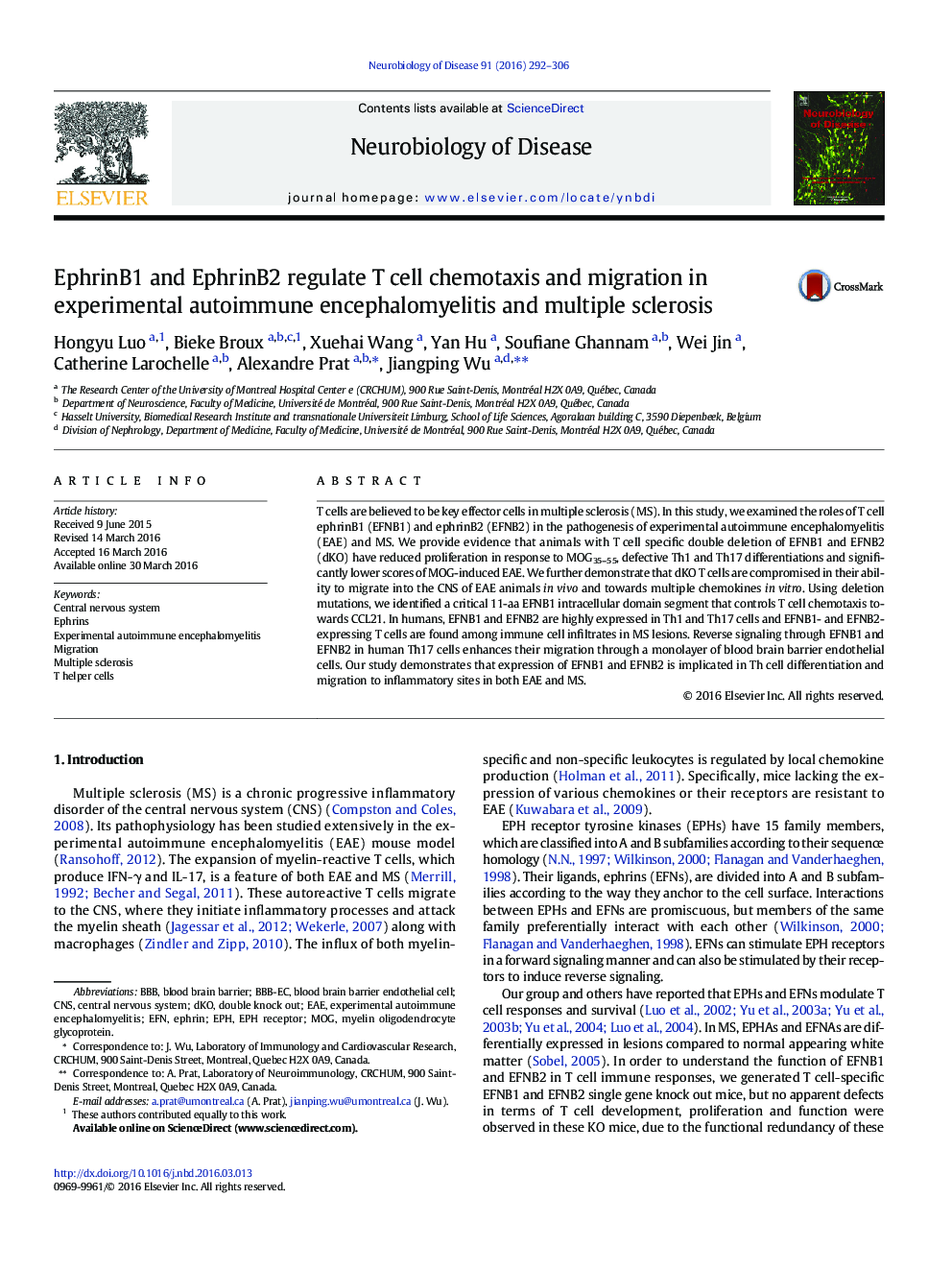| Article ID | Journal | Published Year | Pages | File Type |
|---|---|---|---|---|
| 6021397 | Neurobiology of Disease | 2016 | 15 Pages |
â¢EFNB1/B2 dKO mice exhibit lower clinical scores after MOG35-55 induced EAE.â¢EFNB1/B2 dKO T cells show impaired Th17 differentiation and migration.â¢EFNB1/B2 are expressed on human Th17 cells in vitro and on T cells in MS lesions.â¢EFNB1/B2 reverse signaling increases Th17 migration through BBB endothelial cells.
T cells are believed to be key effector cells in multiple sclerosis (MS). In this study, we examined the roles of T cell ephrinB1 (EFNB1) and ephrinB2 (EFNB2) in the pathogenesis of experimental autoimmune encephalomyelitis (EAE) and MS. We provide evidence that animals with T cell specific double deletion of EFNB1 and EFNB2 (dKO) have reduced proliferation in response to MOG35-55, defective Th1 and Th17 differentiations and significantly lower scores of MOG-induced EAE. We further demonstrate that dKO T cells are compromised in their ability to migrate into the CNS of EAE animals in vivo and towards multiple chemokines in vitro. Using deletion mutations, we identified a critical 11-aa EFNB1 intracellular domain segment that controls T cell chemotaxis towards CCL21. In humans, EFNB1 and EFNB2 are highly expressed in Th1 and Th17 cells and EFNB1- and EFNB2-expressing T cells are found among immune cell infiltrates in MS lesions. Reverse signaling through EFNB1 and EFNB2 in human Th17 cells enhances their migration through a monolayer of blood brain barrier endothelial cells. Our study demonstrates that expression of EFNB1 and EFNB2 is implicated in Th cell differentiation and migration to inflammatory sites in both EAE and MS.
